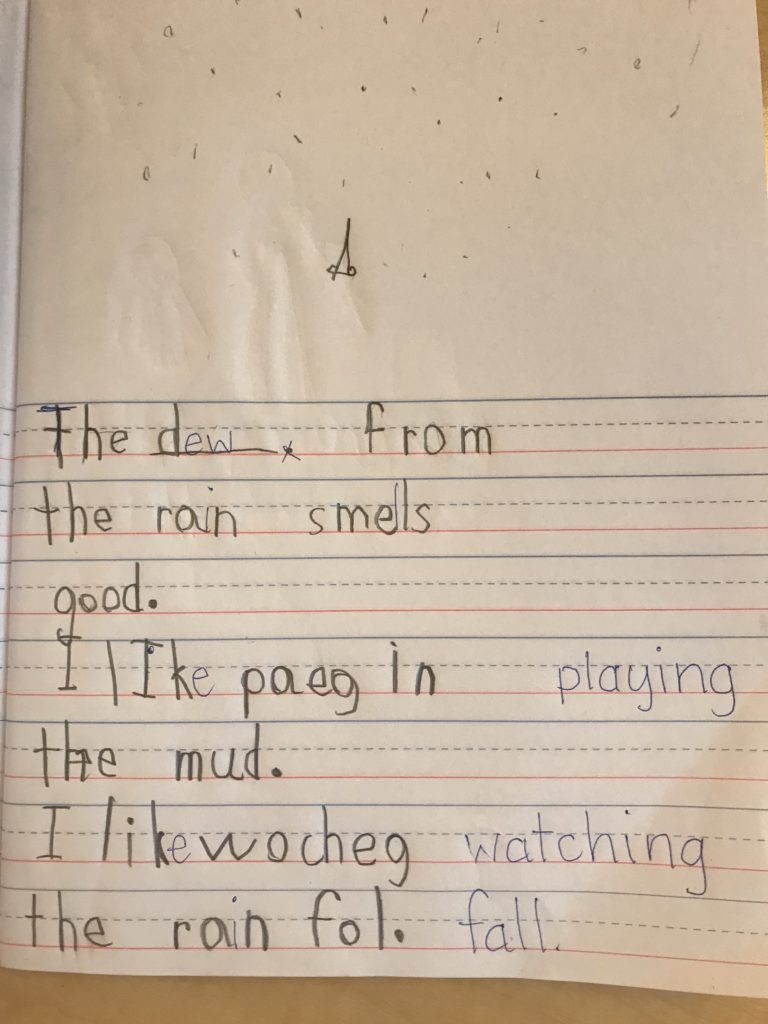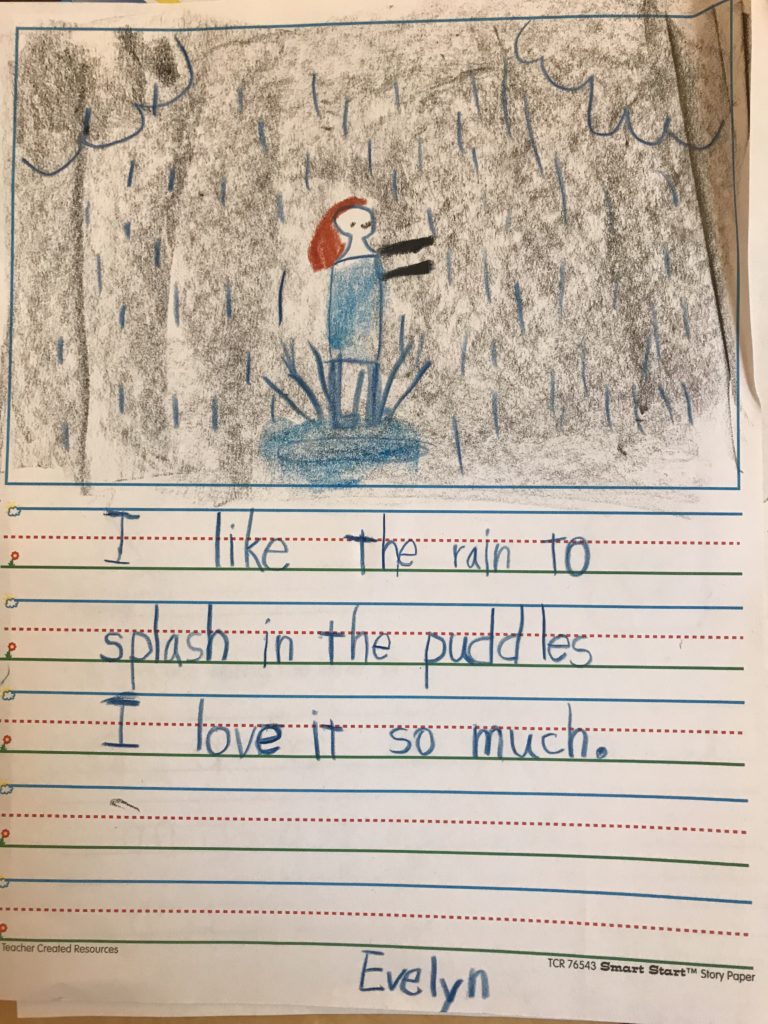
This summer I attended the Art of Teaching Grade 2 workshop at Rudolf Steiner College in Sacramento, CA. I and many of the other participants were completely taken by storm with the new literacy resource Roadmap to Literacy by Janet Langley and Jennifer Militzer-Kopperl. Janet is a longtime Waldorf teacher from California and Jennifer is a Waldorf-trained Lindamood Bell literacy tutor. Their colleague Patti Connelly was our instructor and she essentially walked us through the structure of the book, emphasizing the aspects of literacy development that are key to 2nd grade. (Patti and Janet are the teachers behind Waldorf Inspirations, which you should definitely check out, if you haven’t already.)
Though this is my first time through the lower grades — I’ve never taught children to read before(!) — I’ve been aware of the shortage of Waldorf literacy resources. Over the years, I’ve watched my own children’s teachers struggle with teaching reading based on Steiner’s indications. The fundamental problem, it seemed, was not enough instruction in phonics.

When I think about my former middle school students and their struggles with reading, I see that understanding the phonics rules was at the root of their difficulty. And those students who had direct phonics instruction (usually through outside tutoring) did well and had the tools they needed to read fluently.
It’s true, many students will pick it up naturally, but as Patti pointed out in our summer workshop, about 2/3 will need more direct instruction in phonics in order to become fluent readers.
Roadmap to Literacy Review
In the following review, I go through the structure of the book and what I have found useful in my teaching. Janet and Jennifer sent me a copy over the summer to review, so this post has been in the works for awhile. They requested that I not review until I had read the entire book so I would have a thorough understanding of the entire approach, start-to-finish.
In fact, they recommend that teachers read the 600-page volume cover-to-cover before implementing anything in the classroom. To be honest, some teachers have shared with me that this is a barrier they have not been able to get past, so they have not yet implemented any of the recommendations in Roadmap.
In the end, I’m grateful that I read the entire book before school started, but I do think it is reasonable to not expect a complete read-through before beginning the work. You definitely don’t want to just flip the book open to the parts that are relevant for your grade, but read enough to understand the entire approach before bringing it to your students.
The fact is that the ideas and strategies in this book create a roadmap. You need to understand where you’ve been, know where you’re going and place one foot in front of the other along the way.
English is Not German
In the introduction to Roadmap, Janet recounts a conversation she had with Jennifer about why so many Waldorf students need tutoring in reading and writing. Essentially, the answer came down to the fact that English is a very different language than German. The pure, consistent vowel sounds of German make it very easy to read. Once you know the alphabet, reading progresses quite naturally.
This is not the case with English.
There are so many variations in how the letters sound, depending on the situation. Even the most seemingly consistent letters occasionally decide to throw us curve balls. (Ever noticed how even friendly little D sounds like T in “worked” but D in “played”?)
The idea that English requires different instructional techniques than German provides the basis for the book and essentially gives teachers permission to investigate instructional techniques beyond those recommended by Steiner. Years of reading instruction in English-speaking Waldorf schools supports the idea that English-speaking Waldorf students need more direct phonics instruction than their German counterparts.
Now, on to the book.
The book is broken down into six sections.
Section 1 — Essential Background Information
Here you’ll find an overview of the book and some of the basic premises (like the information above.)
Section 2 — Waldorf Methodologies
In this section they go through the typical Waldorf approach, what’s working, what can be improved and how teachers can go about planning for those improvements. They talk about long-established Waldorf approaches that were either never indicated by Steiner and have emerged over the years or established practices that don’t really serve children. They refer to them as “sacred nothings.” They also talk about the idea of “responsible innovations,” which is an idea I really like. Over the years, many diligent teachers have introduced innovations that come out of their own intuition for their students’ needs. The freedom to explore these innovations based on your intuition and observation of your students is what I love most about Waldorf Education. I believe the movement is best served when teachers honor the value that Steiner placed on the understanding that comes out of the human connection between teacher and student.
Section 3 — The 15 Aspects of Language Arts
This section covers the topics that must be covered in language arts instruction. It goes through the variety of activities your students must engage in for literacy to take hold. The book outlines systems for leading your students through these activities. This section also outlines the three phases of literacy: the phonemic awareness phase, the pattern phase and the syllable phase.
Section 4 — Phonics Rules
The specific phonics rules in this section are broken down by literacy phase, which gives a template for when the different phonics rules should be taught. The progression through the phonics rules is clearly outlined and strategies for teaching the phonics rules are also given.
Section 5 — Curriculum and Lesson Planning
Curriculum plans are given for each grade.
Section 6 — Assessment and Remediation
In this section you’ll find tools for identifying which phase your students are in, as well as benchmarks for each grade.
The Roadmap to Literacy Top Takeaways
Direct Phonics Instruction in a Prescribed Sequence
My hands-down favorite thing about this book is that it gives clear indications for the instruction of various phonics rules, with a prescribed progression. As I read through the pages, I can see how to gently lead my students from one phonics rule to the next, expanding their reading toolkit as we go. Specific lesson plans and images to support the students’ learning are absolute invaluable and I have used many of their phonics lessons already.
The Phases of Literacy with Indicators For Each
As we make our way through the Roadmap, it makes sense that teachers would want to identify their students’ place along the journey towards reading. Other resources (like Words Their Way) help teachers with this, but it is nice to have a Waldorf-specific resource for identifying where students are with their reading. Using this resource, I have been able to identify where my students are and anticipate where they are going next. This means that I can prompt them with relevant words of encouragement that will take them to the next stop on the Roadmap.

Kid Writing
I confess that when I first read through Roadmap and saw the activities that were recommended for my 2nd graders, I thought, “My students are nowhere near ready for that!” Kid writing was one of these activities. But I trustingly moved forward, taught them how to listen for sounds and what to do if they weren’t sure. We are now in our 5th week of kid writing and my students can confidently and independently sit down and write, listening for sounds and making pretty good educated guesses. Though there were tears the first week, each week they are writing more, taking more risks with their word choices and remembering correct spellings from previous weeks.
To be honest, kid writing is one of the most successful components of our language arts lessons and I am completely sold on the idea that writing is the best path towards reading.
I really appreciate that Roadmap gives a specific method for introducing and working through kid writing. I wrote another post about our kid writing experience that you can read here.
In the end, I am a huge fan of this book. It is a bit controversial as it turns the traditional Waldorf “whole language” approach to literacy on its ear, but I am grateful to have another set of tools to use. Different children learn differently and more resources are always welcome.
I think Roadmap to Literacy is the language arts resource that has been sorely lacking in the Waldorf world. And as a grammar nerd, I am hopeful that someone will write another volume that addresses language arts in grades 4-8.




Leave a Reply